Anasazi: Sophisticated Civilization That Disappeared Or Evolved Into American Indians Of Southwest
A. Sutherland - AncientPages.com - The Anasazi people was a civilization that arose as early as 1500 BC and the remains of their dwellings can be found in south-west America.
Perhaps the most well-known is their first settlement at Mesa Verde discovered by a trader and rancher, Richard Wetherill, in 1888–1889.
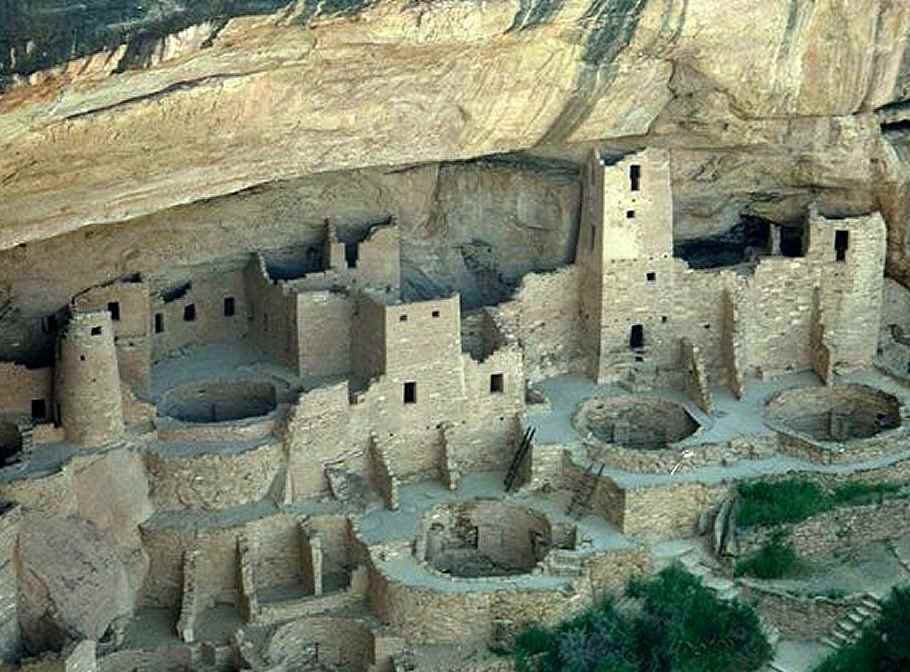
The answer to the mystery of why the Puebloans abandoned their great cities may be contained within the tribes’ oral traditions.
What event forced these people to flee their homeland and never to return, it is not clear. The remains left in places they inhabited, were found well preserved due to the dry conditions; some desiccated bodies made people wonder, whether it was some kind of massacre that had taken place at the site of the discovery or environmental factors were involved. In Anasazi site known as Mummy Cave, there were found desiccated bodies dating to 300 AD.
See also:
The Enigma Of The ‘Ancient Ones’, The Anasazi Cliff-Dwellers Of The Southwestern United States
The ‘Anasazi’ Mystery: Sophisticated Civilization That Disappeared
Pueblo Bonito (“pretty village”) - located in Chaco Canyon, in New Mexico - is a special place; it’s one of the most impressive prehistoric sites in the United States.
Now, this region is a vast arid desert of sand, rock and mesa, but it was flourishing agricultural community. This was a domain of the Anasazi, or rather the Ancient Pueblo peoples who lived in cliff dwellings and pueblos. The name ‘Anasazi’ is a Navajo word for “enemy ancestors”.
The greatest architectural accomplishment of this vanished civilization was the houses and settlements built into the sheer rock wall of the Chaco Canyon in western New Mexico. Canyons, buttes, and mesas housed a population of 30,000 at its peak and covered an area of 30,000-square-mile of landscape.
They built such villages as the Pueblo Bonito, which at certain areas was as high as five stories and contained 800 rooms, all arranged in a D-shaped arrangement.
Pueblo Bonito was only one small part of a network of settlements connected by a 400-mile system of roads, some as wide as 30 feet, flanked along the way by astronomical observatories.
Another impressive mesa was present-day Acoma Pueblo called the “Sky City” in New Mexico.
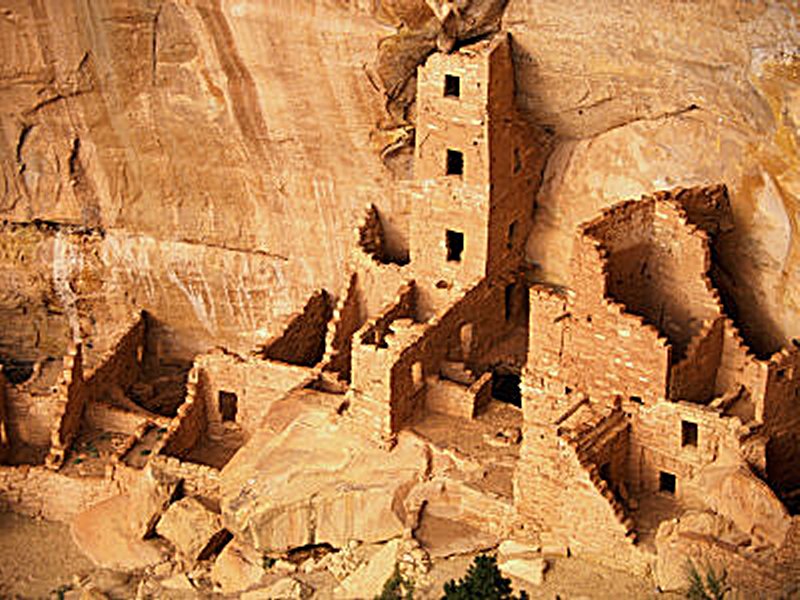
It was suggested that these large roads were used to quickly move an army from the canyon to the outlier communities but the lack of traces of a permanent army is evident.
This civilization, formerly known as the Anasazi was very advanced. Great cities flourished among the sandstone cliffs, astronomers studied the stars and engineers built great roadways, towers, and stone complexes. Some of these structures even today surprise us.
In fact, about 15 major complexes assembled by Chacoan skilled builders remained the largest buildings in North America until the 19th century!
The water supply was controlled by a series of dams and channels.
This is a legacy of the Ancient Pueblo peoples or if you prefer call them – the Anasazi, a mysterious great civilization which left pottery, weaving and other crafts but their writing is unknown, although some pictographs have been found.
Today, various American Indian tribes of the region claim to be descendants of the Ancient Pueblo peoples and call themselves the Puebloans.
They believe that the Anasazi did not disappear, but rather evolved into today's American Indian population of the Southwest.
Written by – A. Sutherland - AncientPages.com Senior Staff Writer
Copyright © AncientPages.com All rights reserved. This material may not be published, broadcast, rewritten or redistributed in whole or part without the express written permission of AncientPages.com
Expand for referencesMore From Ancient Pages
-
 Our Lives Have Always Been Manipulated By Money – Part 1
Featured Stories | Jun 2, 2022
Our Lives Have Always Been Manipulated By Money – Part 1
Featured Stories | Jun 2, 2022 -
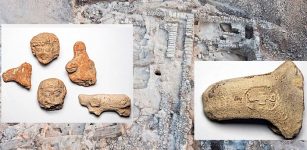 Kingdom Of Judah: Government Complex And 120 Seal Impressions Stamped On Jars – Unearthed
Archaeology | Jul 23, 2020
Kingdom Of Judah: Government Complex And 120 Seal Impressions Stamped On Jars – Unearthed
Archaeology | Jul 23, 2020 -
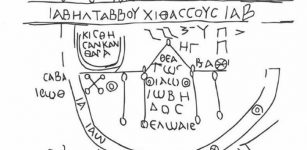 A Remarkable Curse Tablet Dated To the 1st Century AD – Unearthed In Tongeren
Archaeology | Jul 10, 2020
A Remarkable Curse Tablet Dated To the 1st Century AD – Unearthed In Tongeren
Archaeology | Jul 10, 2020 -
 On This Day In History: 55 Delegates Convened To Write What Would Become The U.S. Constitution – On May 14, 1787
News | May 14, 2016
On This Day In History: 55 Delegates Convened To Write What Would Become The U.S. Constitution – On May 14, 1787
News | May 14, 2016 -
 Secrets Of The Japanese Shirasaya Sword Mounting
Featured Stories | Sep 11, 2018
Secrets Of The Japanese Shirasaya Sword Mounting
Featured Stories | Sep 11, 2018 -
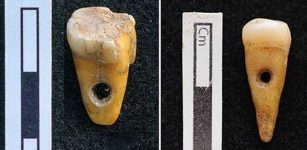 Rare Discovery Of 8,500-Year-Old Human Teeth Used As Jewelry
Archaeology | Dec 16, 2019
Rare Discovery Of 8,500-Year-Old Human Teeth Used As Jewelry
Archaeology | Dec 16, 2019 -
 Adad ‘Lord Of Abundance’- Mesopotamian Weather God Who Was Responsible For Fertility, Wealth And Oracles
Featured Stories | Mar 11, 2020
Adad ‘Lord Of Abundance’- Mesopotamian Weather God Who Was Responsible For Fertility, Wealth And Oracles
Featured Stories | Mar 11, 2020 -
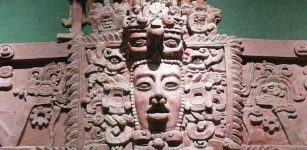 Ancient Maya Lessons On Surviving Drought – Examined By Scientists
Archaeology | Jan 5, 2022
Ancient Maya Lessons On Surviving Drought – Examined By Scientists
Archaeology | Jan 5, 2022 -
 Griffins Were Mythical Gold-Guarding Hybrid Creatures Known For At Least 5,000 Years
Ancient Symbols | Mar 9, 2021
Griffins Were Mythical Gold-Guarding Hybrid Creatures Known For At Least 5,000 Years
Ancient Symbols | Mar 9, 2021 -
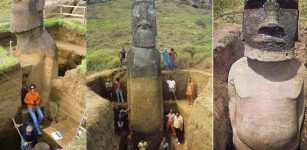 Easter Island’s Statues Reveal Bodies Covered With Unknown Ancient Petroglyphs
Archaeology | Jan 21, 2014
Easter Island’s Statues Reveal Bodies Covered With Unknown Ancient Petroglyphs
Archaeology | Jan 21, 2014 -
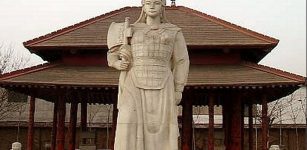 Lady Fu Hao: Brave Warrior Skilled Strategist And China’s First Female General
Featured Stories | Mar 9, 2019
Lady Fu Hao: Brave Warrior Skilled Strategist And China’s First Female General
Featured Stories | Mar 9, 2019 -
 Those Who Mysteriously Disappeared To A World Beyond Human Understanding
Featured Stories | Apr 30, 2019
Those Who Mysteriously Disappeared To A World Beyond Human Understanding
Featured Stories | Apr 30, 2019 -
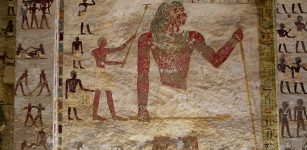 Rock-Cut Tombs Of Beni Hasan With Spells, Prayers To Osiris And Anubis And Map To Underworld
Civilizations | Feb 3, 2017
Rock-Cut Tombs Of Beni Hasan With Spells, Prayers To Osiris And Anubis And Map To Underworld
Civilizations | Feb 3, 2017 -
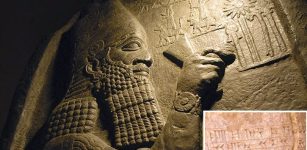 Clay Tablets Of Assyrian ‘King Of The World’ Esarhaddon Found Beneath Biblical Tomb Of Jonah
Archaeology | Mar 1, 2018
Clay Tablets Of Assyrian ‘King Of The World’ Esarhaddon Found Beneath Biblical Tomb Of Jonah
Archaeology | Mar 1, 2018 -
 On This Day In History: Sverre Sigurdsson Became King Of Norway – On June 29, 1194
News | Jun 29, 2016
On This Day In History: Sverre Sigurdsson Became King Of Norway – On June 29, 1194
News | Jun 29, 2016 -
 Cats Were Rare And Expensive During The Viking Age – Spectacular Discovery Reveals Why
Featured Stories | Jan 12, 2017
Cats Were Rare And Expensive During The Viking Age – Spectacular Discovery Reveals Why
Featured Stories | Jan 12, 2017 -
 Conwy Castle In Snowdonia: Outstanding Medieval Fortification In Europe
Featured Stories | Oct 16, 2018
Conwy Castle In Snowdonia: Outstanding Medieval Fortification In Europe
Featured Stories | Oct 16, 2018 -
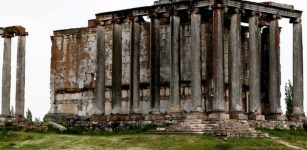 Ancient City Of Aizanoi: Statue Heads Of Greek Gods Unearthed In Excavations
Archaeology | Nov 23, 2021
Ancient City Of Aizanoi: Statue Heads Of Greek Gods Unearthed In Excavations
Archaeology | Nov 23, 2021 -
 People With Neanderthals’ Pain-Related Gene May Suffer More On A Daily Basis
DNA | Jul 27, 2020
People With Neanderthals’ Pain-Related Gene May Suffer More On A Daily Basis
DNA | Jul 27, 2020 -
 On This Day In History: The King James Bible Is Published For The First Time In London – On May 2, 1611
News | May 2, 2016
On This Day In History: The King James Bible Is Published For The First Time In London – On May 2, 1611
News | May 2, 2016

